Last Chance to Catch NYC's Holiday Notalgia Train
We met the voices of the NYC subway on our nostalgia ride this weekend!


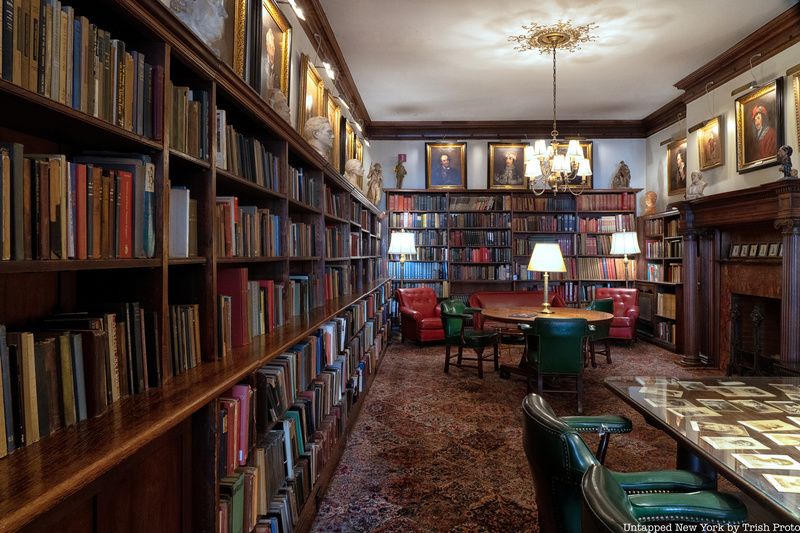
Located at 16 Gramercy Park South, The Players is a member’s social club founded in 1888 by noted Shakespearean actor, Edwin Booth. The original purpose of the club was twofold: to promote a mutually-supportive community for men of arts and letters and patrons of the arts, and to provide a social setting in which the city’s professional and class divisions were not enforced. Players, regardless of profession or fame, were all on equal footing.
Nikola Tesla was one of many notable members in the early years of The Players, which also included names like architect Stanford White, who renovated the Gramercy Park clubhouse, General William Tecumseh Sherman, actor John Drew, and writer Bram Stoker. In the decades since, other boldface names like James Cagney, Sidney Poitier, Mary Tyler Moore, Leontyne Price, and Ethan Hawke have joined the roster. As a membership club, only Players and their guests may enter. Read on to discover the secrets we learned on a special tour!
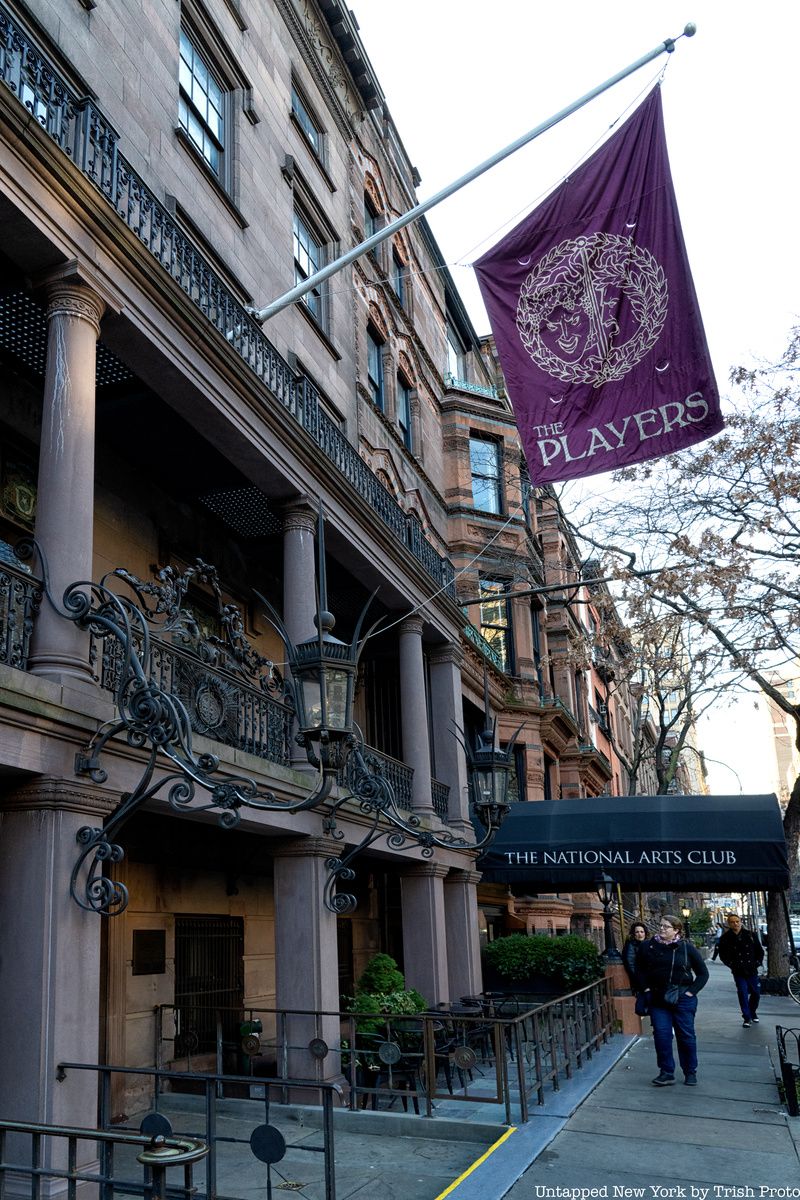
On May 17th, Untapped New York Insiders are invited inside The Players clubhouse for an exclusive tour! On this tour, you’ll learn about the history of the Club and its famous members, walk inside Edwin Booth’s bedroom, visit the Hampden-Booth Theatre Library, and much more! This tour is free for Untapped New York Insiders! Not an Insider yet? Become a member today to gain access to members-only in-person and virtual experiences all year long. Get your first month free with code JOINUS.
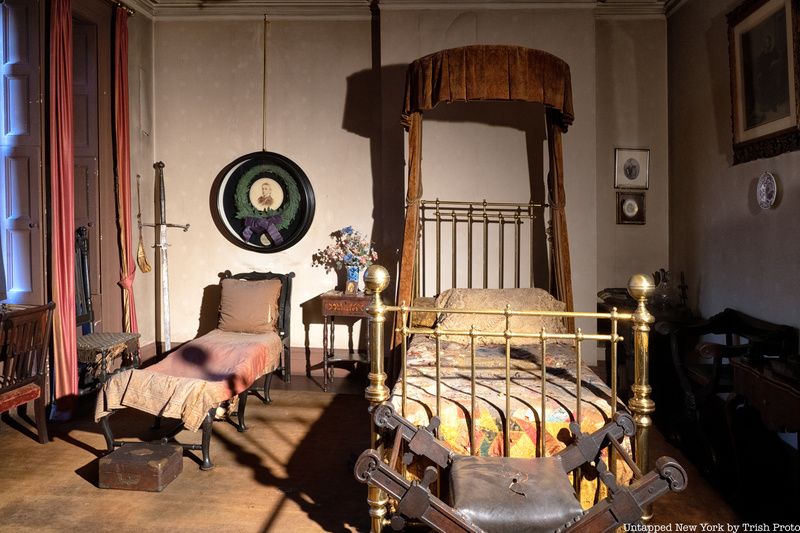
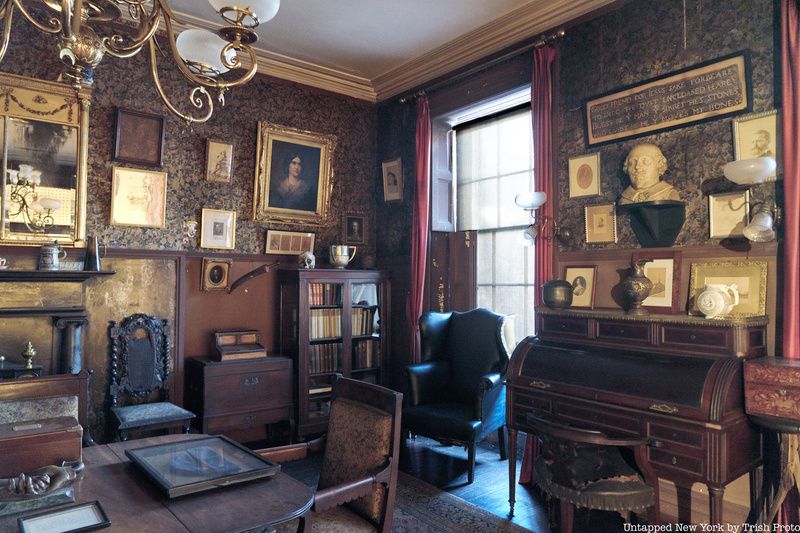
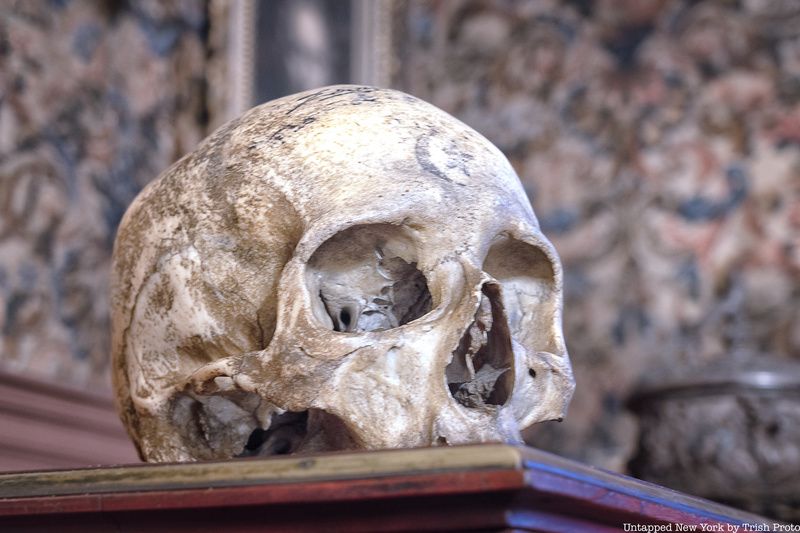
One of the most notable places in the stately townhouse is Edwin Booth’s parlor and bedroom. Located on the third floor of the Players, it has remained intact and preserved in time nearly exactly as he left it when he died in 1893. In fact, the very distinct smell of tobacco permeates the room, which is decorated with a marble fireplace, a chandelier, a triptych mirror, and various photographs.
Probably the most creepy item in the room is one of the human skulls that Booth used in performances of Hamlet. There are actually three skulls throughout The Players! The most famous is the skull inside the Booth bedroom suite. This particular prop originally belonged to Edwin’s father, Junius Brutus Booth, also a renowned Shakespearean actor. He passed it on to Edwin. On the skull itself there is an inscription that reads, “And the rest is silence.” Read more on the Edwin Booth room here. Another skull on display is signed by a contemporary of Booth’s, actor and club member Owen Fawcett.
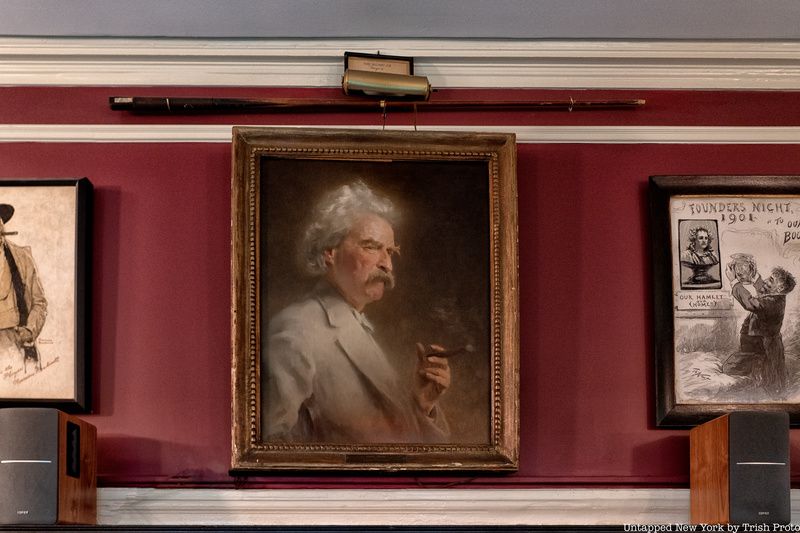
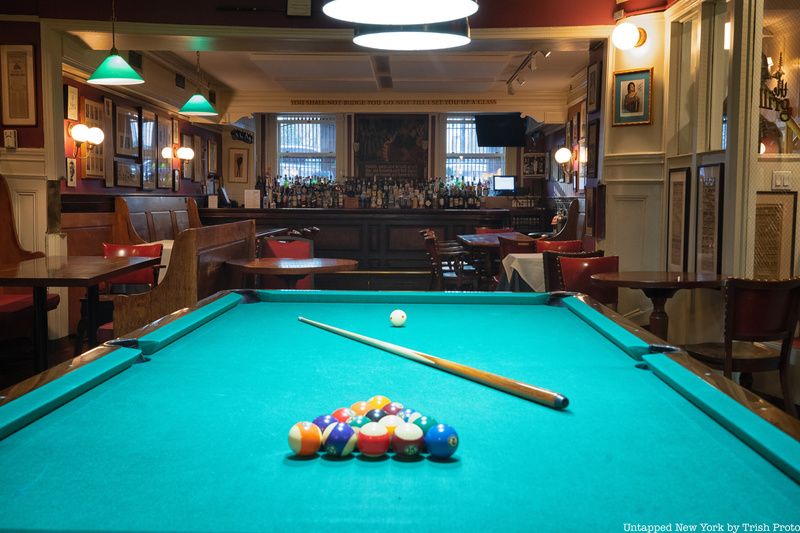
Housed in a stately Greek Revival townhouse, The Players occupies four floors, plus the Grill pub space on the lower level, where members often gather for refreshments, food and conversation. One notable feature inside the Grill is its pool table where Samuel Langhorne Clemens (Mark Twain) frequently played with other members of the club.
Twain’s pool cue is displayed over his portrait, which sits above the fireplace. It accompanies the golf club of actor Jack Lemmon, as well as other pool cues belonging to actor Frank Morgan (best remembered as the Wizard of Oz), newspaper columnist Franklin Pierce Adams and actor Roland Winters. In addition, the Card Room on the second level holds a poker table, which was also reportedly used by Twain.
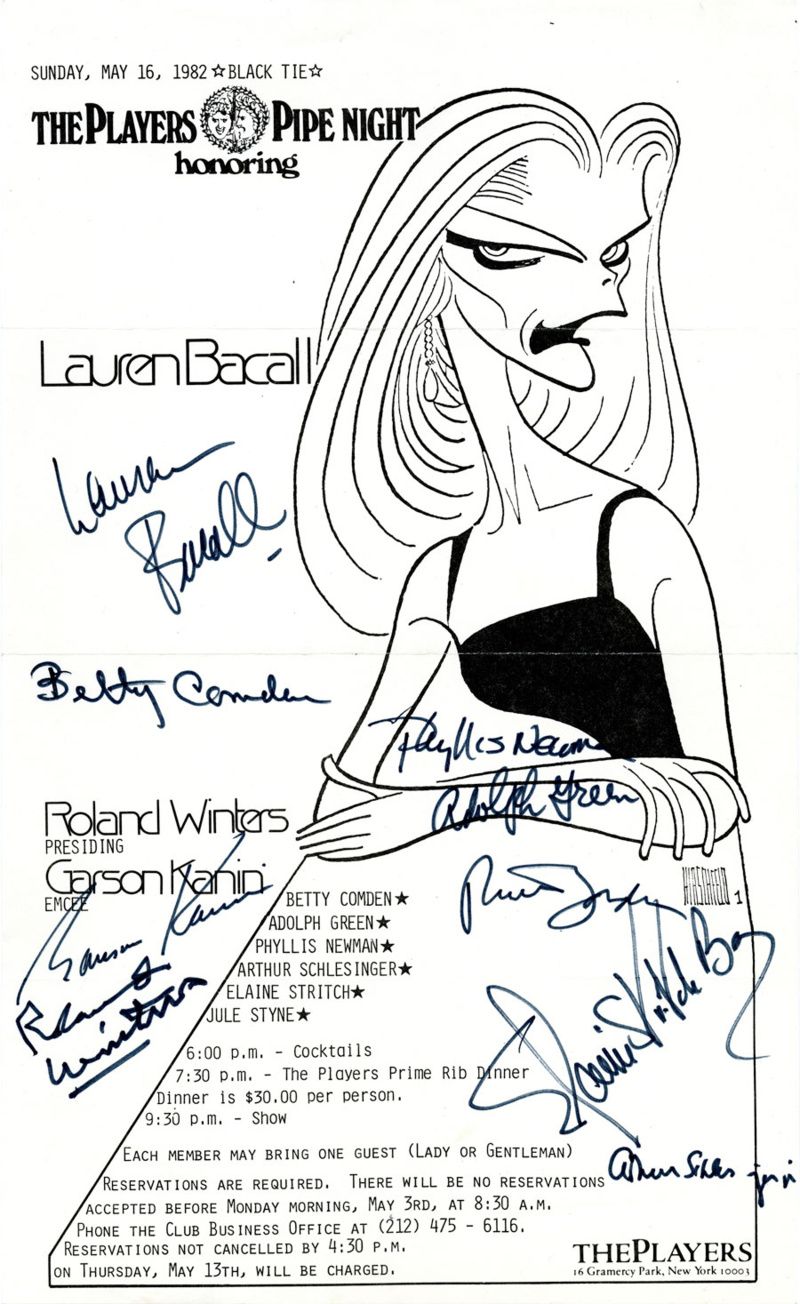
In the early years of the 20th century, members would throw late-night parties at which long-stemmed pipes were smoked and the host (or Pipemaster) would serve as master of ceremonies for entertainment that ran until all hours. By the 1930s, these Pipe Nights evolved into tribute evenings comprised of dinners and tributes for outstanding actors, musicians, and cultural icons.
British actor John Gielgud was the first of these honorees, joined in the decades that followed by Marlene Dietrich, James Cagney, Morgan Freeman, Bob Fosse, Frank Sinatra, Lauren Bacall, Audra McDonald, Al Hirschfeld, and dozens more. While the clubhouse has been smoke-free for some years, the Pipe Night is a unique Players institution whose name lives on, even though actual pipes are no longer involved.
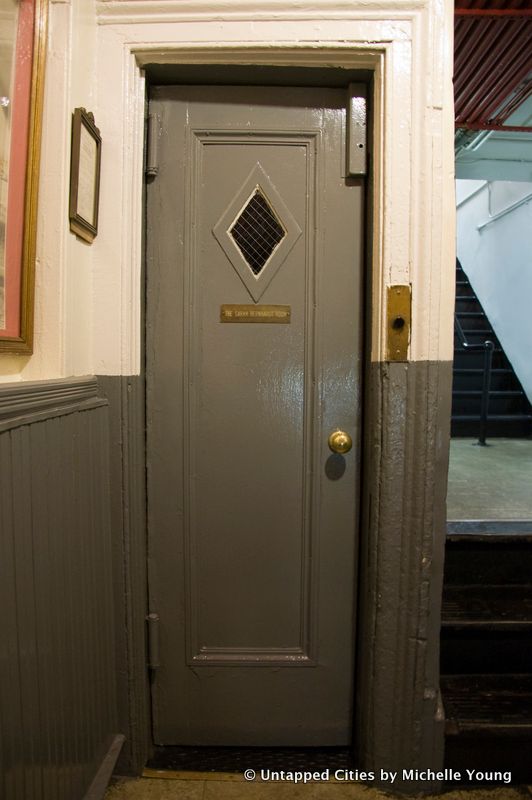
The tiny antique elevator in The Players, nicknamed “Sarah Bernhardt’s room,” had a slightly notorious reputation. The story goes as follows: At a time when only men were ordinarily permitted inside the club, a petition was started to invite the famous French actress to visit. The Board granted the petition. During her visit to the club in 1911, Berhardt was on her way upstairs and got stuck in the elevator while en route to see Booth’s famous bedroom.
Miss Bernhardt was eventually freed and climbed the stairs to the Booth Room. The club’s members joked that the elevator was Sarah Bernhardt’s room, and it’s been called that ever since.
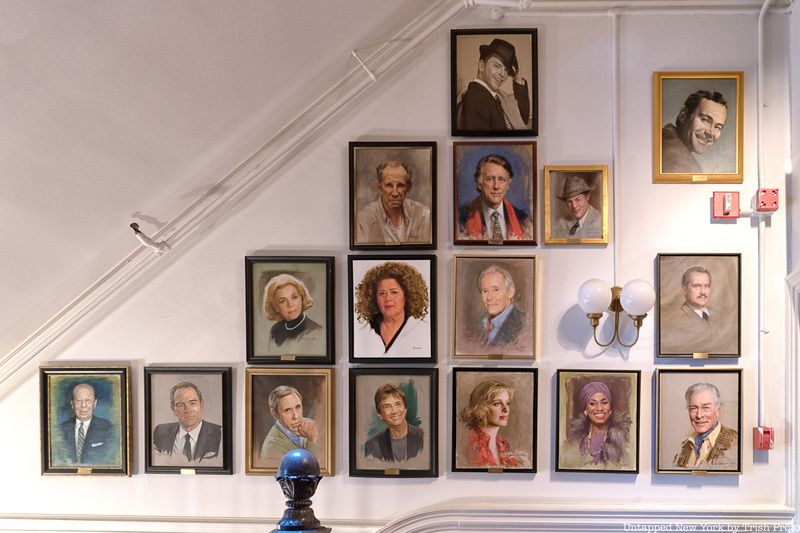
The Players art collection began with the paintings and objects belonging to founder Edwin Booth, who favored collecting portraits of actors in character. Even after Mr. Booth, portraits remained the principal genre—mostly of male subjects until well into the 20th century. In modern times, a periodic ceremony is held by The Players
Foundation of new “Hall of Fame” inductees. These are Players members whose outstanding contributions to the club, the work of Foundation, and the wider culture deserve special recognition.
As part of the ceremonies celebrating new Hall of Fame members, their portraits are unveiled and added to the collection. Hall of Fame portraits are primarily seen on the second and third floors of the clubhouse. These paintings by celebrated artists may be of historic or current members, and include Martha Plimpton, Leontyne Price, Martin Short, Jimmy Fallon, Anna Deavere Smith, Jose Ferrer, and more.
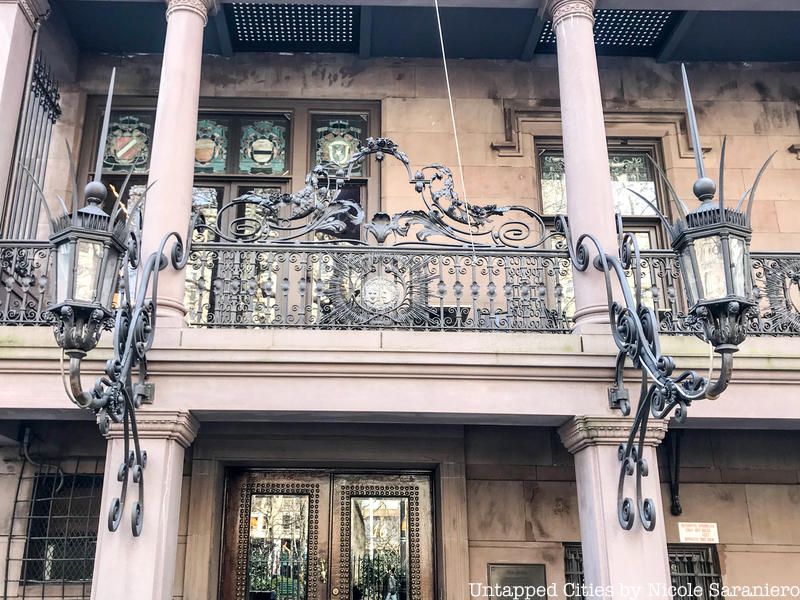
Very much like the rest of the building, the exterior of The Players is notable for its ornate fixtures. A gold and black, wrought-iron railing surrounds the structure, stone balconies divide its floors, and the club’s insignia, depicting two masks associated with comedy and tragedy, decorates its facade. The front entrance was relocated to street level during the renovation prior to the club first opening in 1888.
Particularly noteworthy are the two Renaissance-style gas lamps, with foot-long, jutting spikes, that frame each side of the entrance. They are still functioning (after being restored in recent years) and are today a rarity in New York City. When they were first installed, however, some complained that the lamps were a “garish addition to the neighborhood’s refined architecture.”
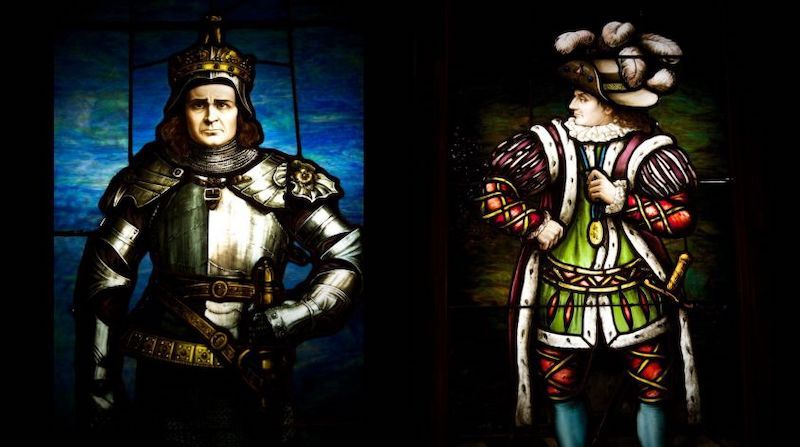
Just off the Great Hall on the main floor sits the original Dining Room of The Players. It is frequently used for dinner service, major events, performances, and play readings. It’s decorated with paintings of notable people, including actress Helen Hayes, the first woman elected to the membership of The Players, and a John Singer Sargent portrait of actor Joseph Jefferson, the club’s second president.
The Dining Room also features two stained glass theater windows, which can be seen on the left and right walls. One depicts David Garrick as Richard III and the other is of Richard Mansfield in the same role a century apart; both are original leaded windows from the now demolished Garrick Theatre in Philadelphia. Built in 1901, and designed by Willis G. Hale, the former theater stood beside the Hale Building and boasted 1,561 seats.
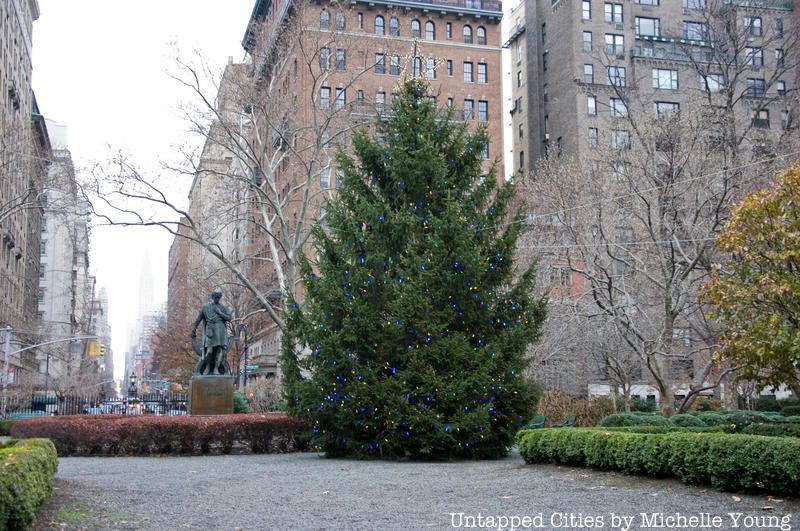
If you’ve ever jogged or strolled around Gramercy Park, you’ve probably peeked through its fence, and stared longingly at manicured gardens and green foliage inside and a statue of actor Edwin Booth in the park center. Located in the Gramercy Park Historic District, the 2-acre private green space is fenced-in all around, and only those with keys are granted access inside. As one of only private parks in New York City (and one of three in the state), it’s shrouded in mystery, leaving many New Yorkers intrigued.
To enter, you’ll need a numbered and coded key — but members of The Players have keyed-access to the park as part of their membership. Roughly keys 4oo are in circulation, but as The New York Times points out, they are very hard, if not impossible, to copy. Apart from club membership, your best bet is to make friends with a nearby resident who lives in one of the 39 select buildings surrounding the park. These buildings pay a yearly fee to maintain the grounds, and two keys, managed by doormen, are allocated to each; they must be signed out by residents, but key holders can invite up to five guests in the park at a time.
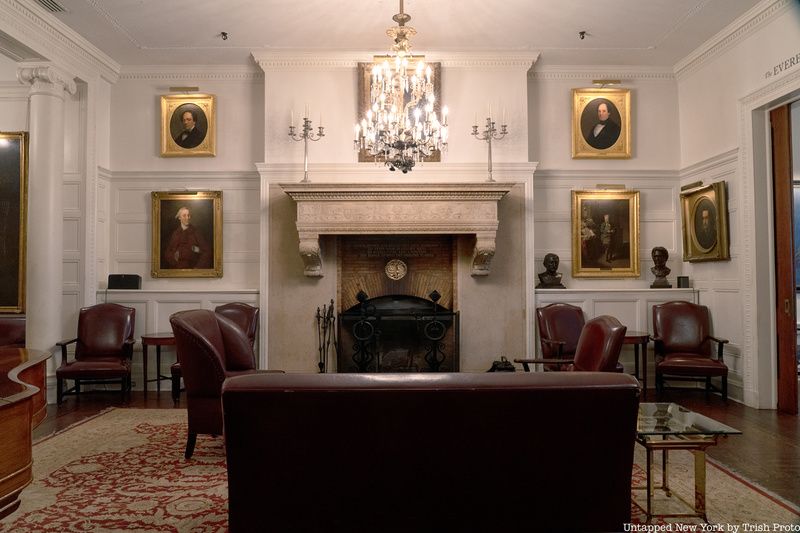
Players do not only have invitations to weekly events and special programming, they have access to an entire network of reciprocal clubs around the world, and in major cities across the United States, including Boston, Philadelphia, San Francisco, and Los Angeles.
While some local clubs permit entry with a Players membership card, the club provides a letter of introduction to clubs outside of New York City. International reciprocal clubs include the Union Club in London, the United Arts Club in Ireland, the Umed Club in India, and the Grémio Literário in Portugal.
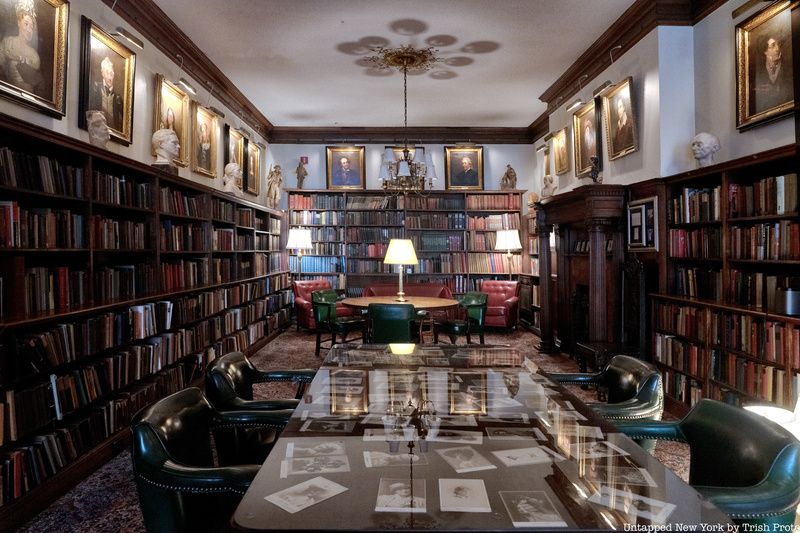
Housed inside The Players is The Hampden-Booth Theatre Library of The Players Foundation for Theatre Education, which holds a rare collection of 19th-century American and British Theatre books, props and other memorabilia. Its basis was the personal library of Edwin Booth, which has since been supplemented by additional bequests and acquisitions. After opening to researchers in 1957, the library was permanently chartered under the Education Law of the State of New York in 1963.
Today, The Players Foundation operates as a nonprofit organization that oversees the work of the library and archives, employing a full-time librarian. It continues to add to its holdings of primary and secondary materials relating to Edwin Booth, his family, relevant 19th-century American and British theatre, Gramercy Park and The Players in general.
Next, check out NYC’s 15 OIdest Private Clubs
Subscribe to our newsletter